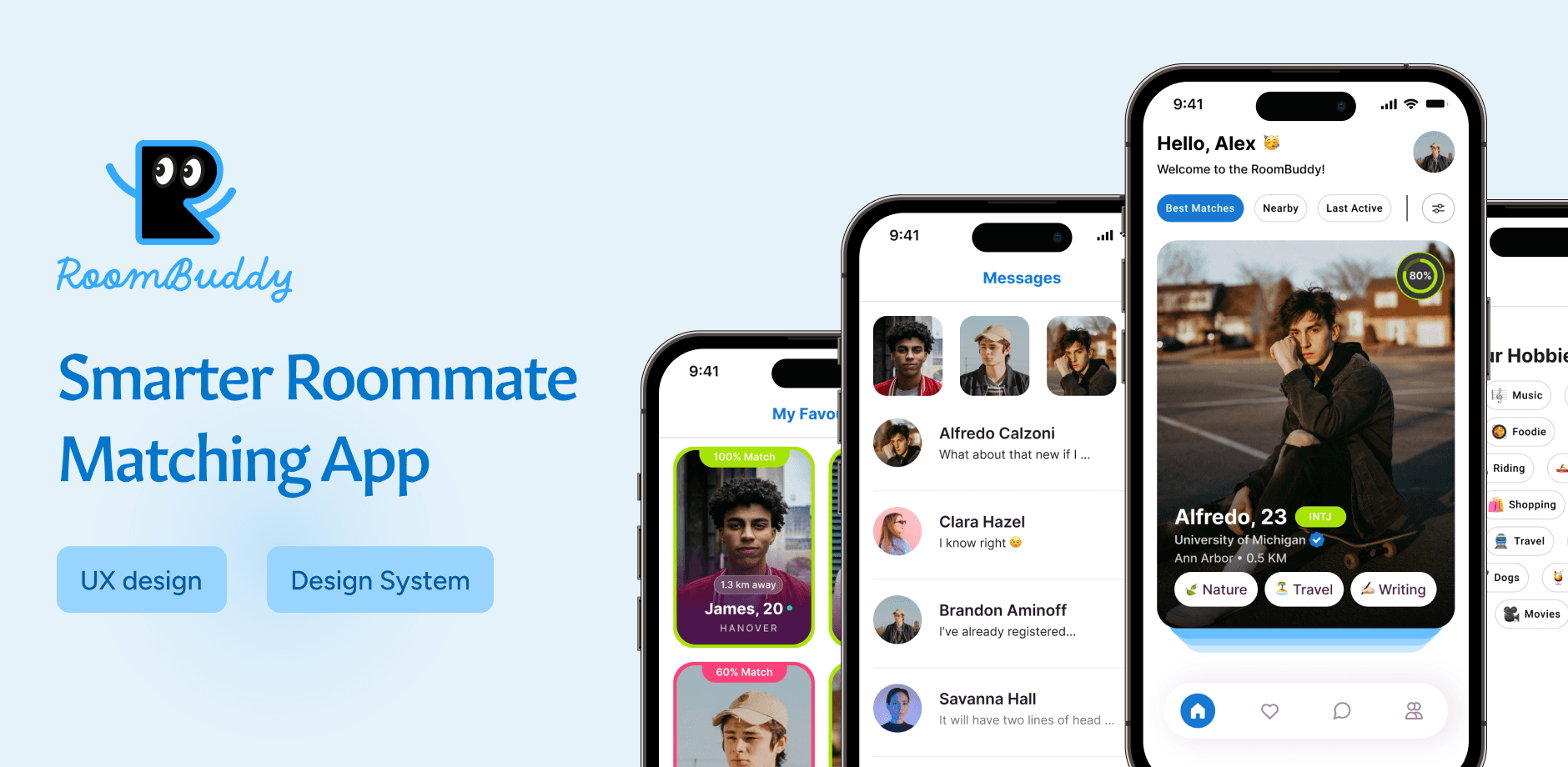
RoomBuddy is a personalized matching platform that goes beyond basic criteria, focusing on both practical needs and interpersonal compatibility to help students create positive, harmonious, and supportive living environments.
ROLE
UX Designer+Researcher
TIMELINE
12 Weeks
TOOLS
Figma, FigJam
Problems ✋
Challenges in Planning Personalized Trips
Planning a personal trip for international students who speak English as a second language can be stressful, overwhelming, and time-consuming. Due to their busy schedules, they may not have time to select their own appropriate travel plans.
Problem Statement⚡️
How might we help university students find compatible roommates to create harmonious and trusting living environments?
Personality and Lifestyle-Based Matching
RoomBuddy combines MBTI (Myers-Briggs Type Indicator) with users’ hobbies, living styles, and lifestyle preferences to provide personalized roommate recommendations. By aligning personality traits and shared interests, the app ensures a deeper level of compatibility and fosters harmonious and supportive living relationships.
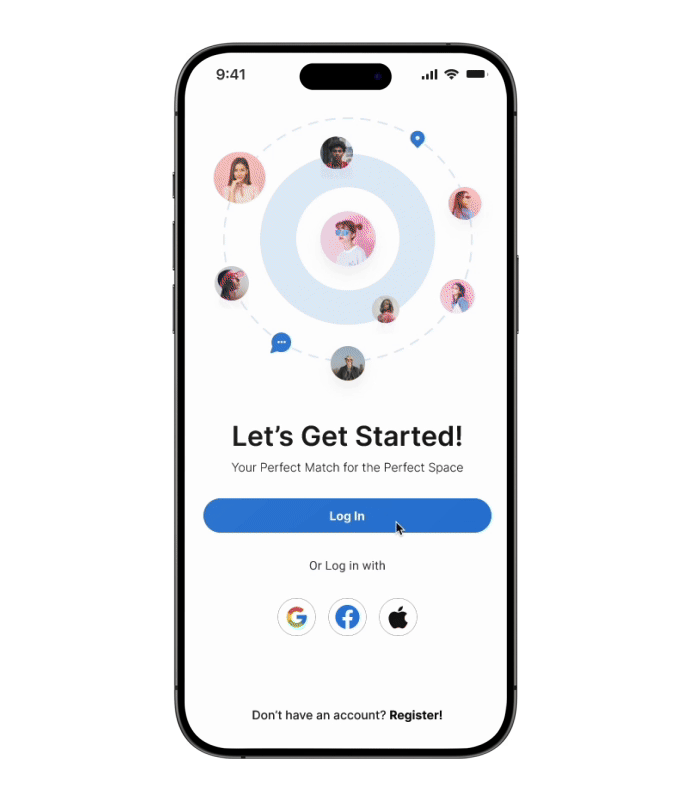

Advanced Filtering and Compatibility Scoring
The app features a robust filtering system that allows users to prioritize specific lifestyle preferences, such as cleanliness, noise tolerance, and shared interests. A compatibility score simplifies decision-making by ranking potential roommates based on their alignment with the user’s preferences and habits.
Verified Student Profiles
RoomBuddy includes a student verification system. Users authenticate their profiles using their university credentials, reducing the risk of scams and ensuring a secure community for roommate matching.
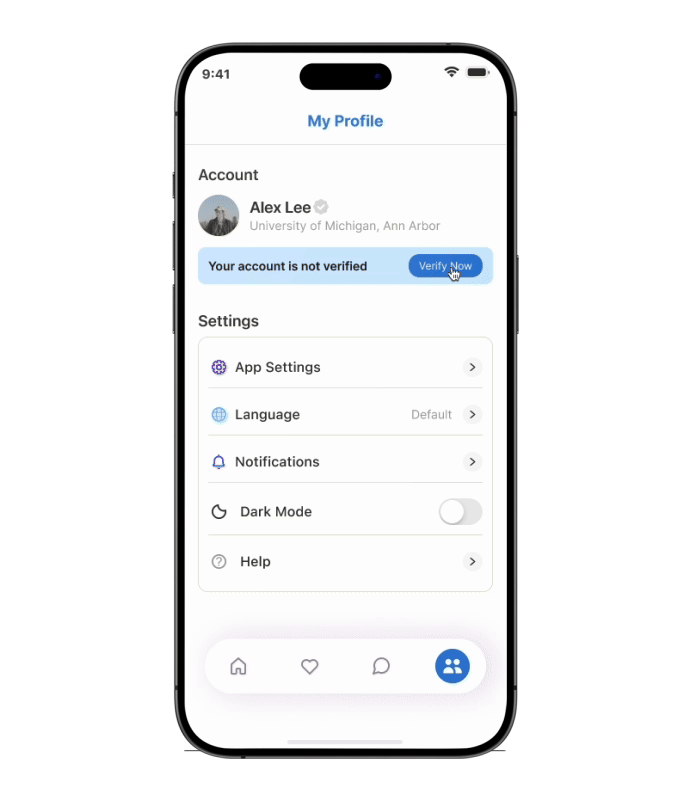
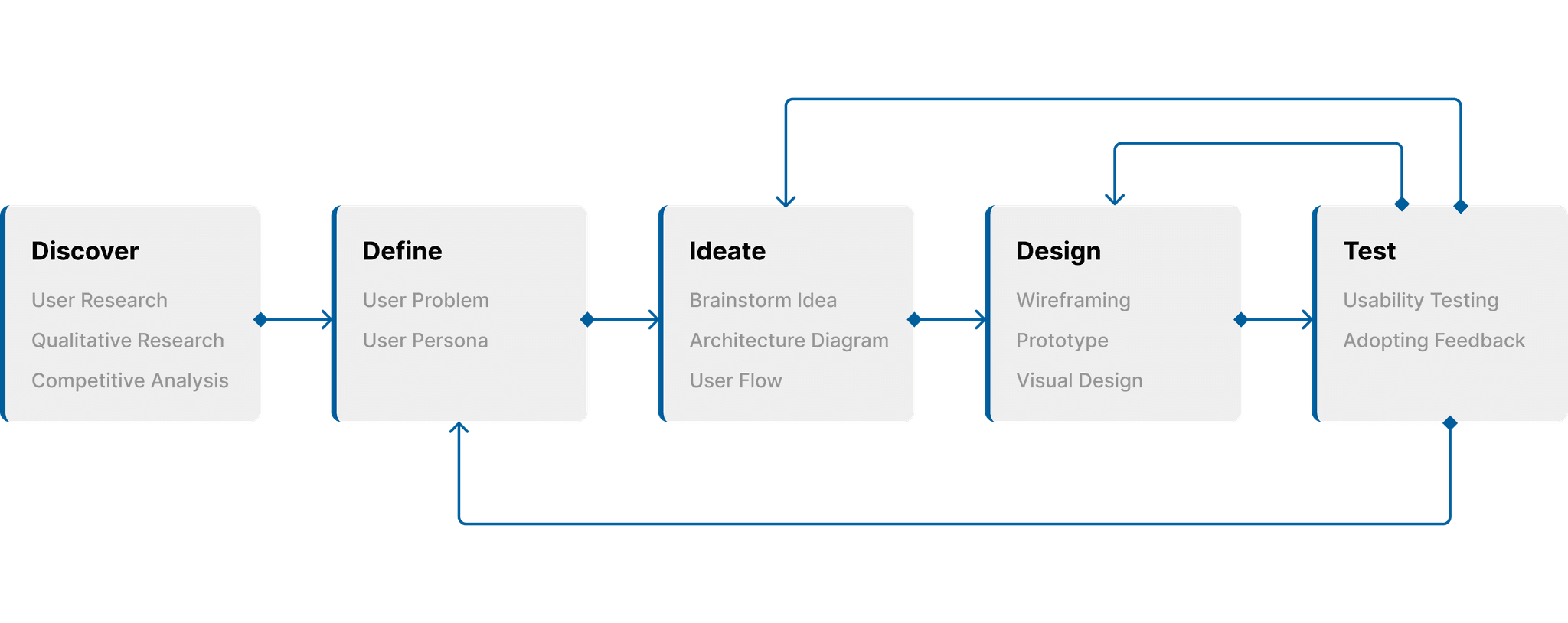
Literature Review
To build a solid foundation for this project, I conducted an in-depth literature review focusing on the challenges of roommate compatibility and existing solutions. The research spanned studies on personality traits like MBTI compatibility and their impact on roommate relationships, as well as the effectiveness of personality-based matching systems in fostering positive living environments.
48% have conflicts with their roommates.
Pursuing a bachelor’s degree is stressful, especially for first-year students transitioning from secondary to postsecondary school — a roommate can help relieve some stress or add to it substantially.
MBTI compatibility can influence roommate relationships.
Pairing roommates with similar MBTI types can lead to a decrease in room changes and conflicts, thereby enhancing the overall living situation.
User Reasearch
To better understand the challenges faced by students in finding compatible roommates, we conducted interviews with several students, including international students. The insights revealed recurring themes, specific pain points, and concerns about safety and timing:
Insight #1: Difficulty with Compatibility
"It's hard to tell if someone will be a good fit just from a Facebook post or a short bio."
Insight #2: Concerns About Scams and Safety
"I don’t feel comfortable reaching out to strangers on unverified platforms."
Insight #3: Pressure of Timing
"Finding a roommate within a short time frame is really stressful for international students"
Competitive Analysis
I analyzed platforms like Facebook groups, Craigslist, and University housing services. These platforms focus on basic criteria such as rent and location but lack tools for deeper compatibility, like personality or lifestyle matching. Safety concerns and limited cultural inclusivity further highlight gaps. RoomBuddy addresses these by offering personalized matches, lifestyle filters, and features like auto-translation and identity verification to meet students’ needs effectively.
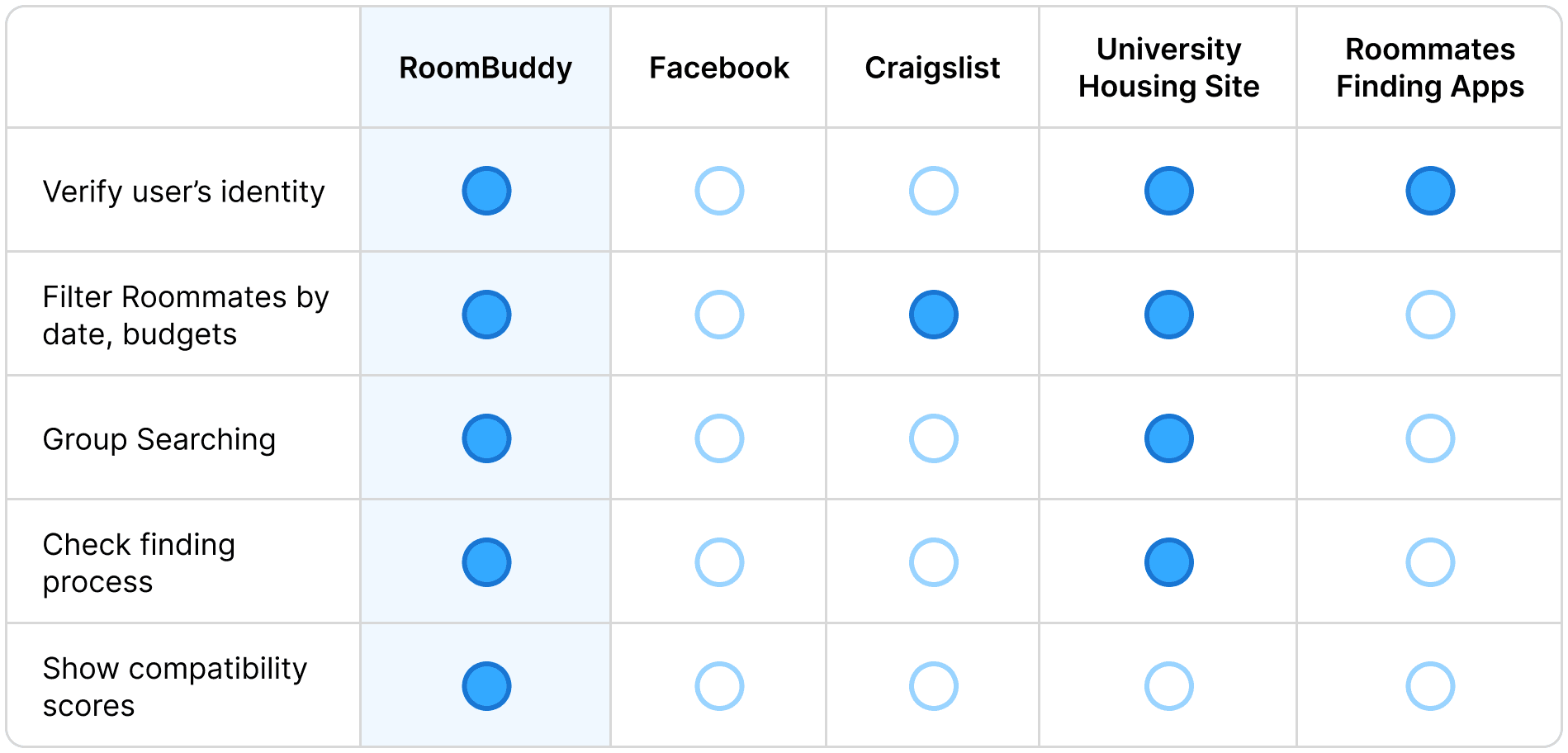
User Persona
I grouped similar users together and developed two distinct user personas, each representing their collective goals, needs, and frustrations related to roommates finding experiences.


User Story Mapping
I organized and categorized user data collected from in-person interviews, surveys, and reviews by using card sorting. During this process, data was grouped by users' needs and activities, as well as emotional and psychological factors.
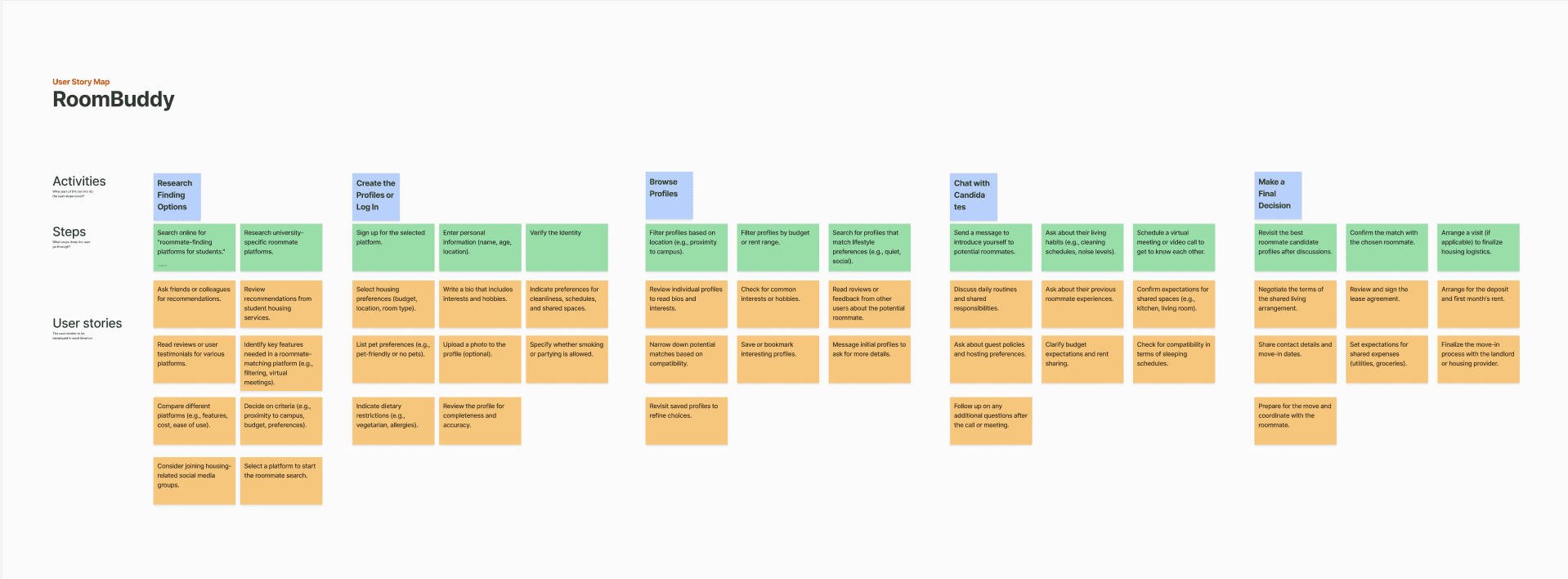
Design System and Components
The RoomBuddy design system emphasizes trust and security through a blue primary color, complemented by orange, red, and green secondary colors for interactivity and feedback. Reusable components like buttons, input fields, and icons ensure consistency and accessibility. Rounded edges and clean typography create a modern, user-friendly look, while the use of frames maintains cohesion across the app’s design.
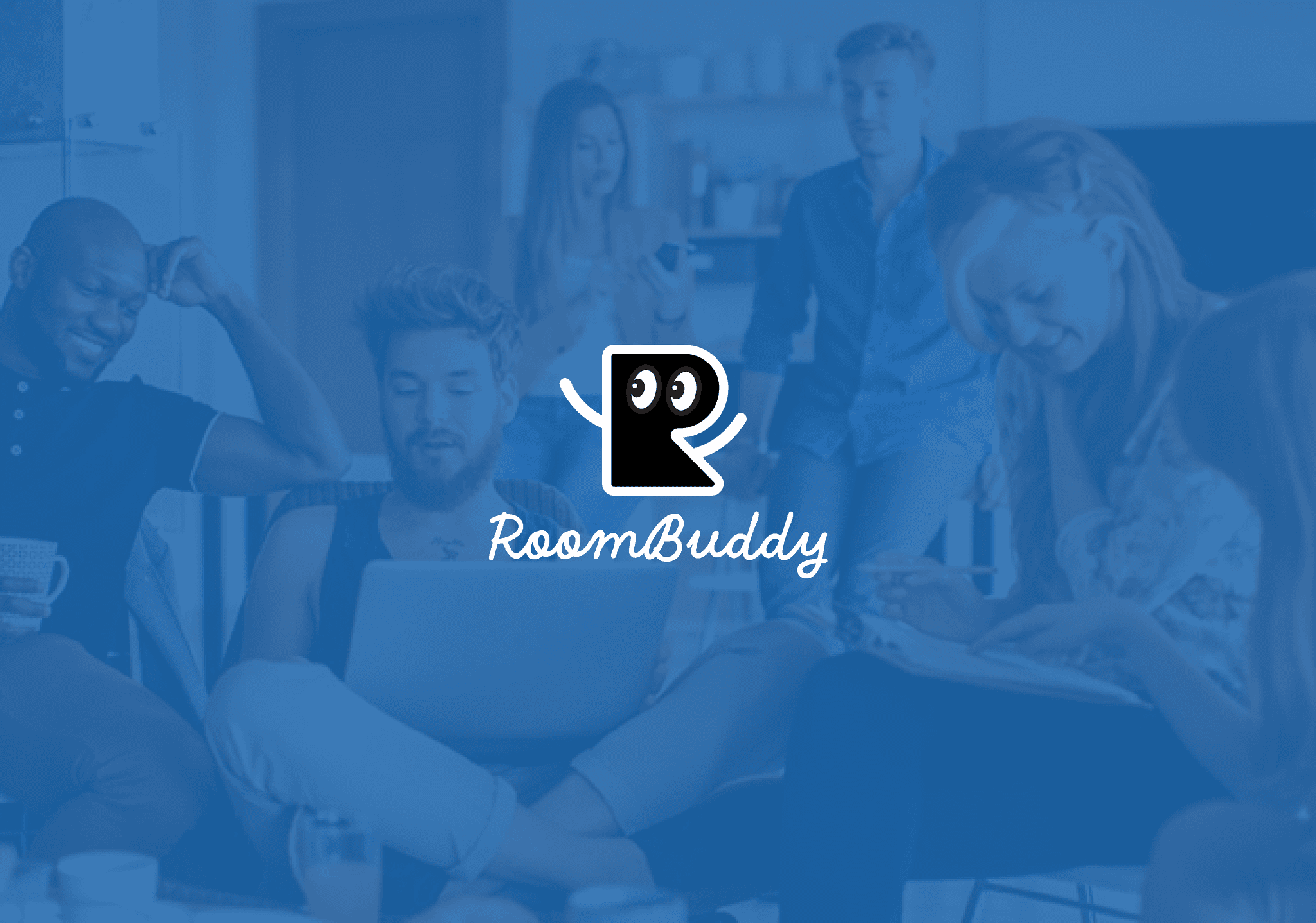
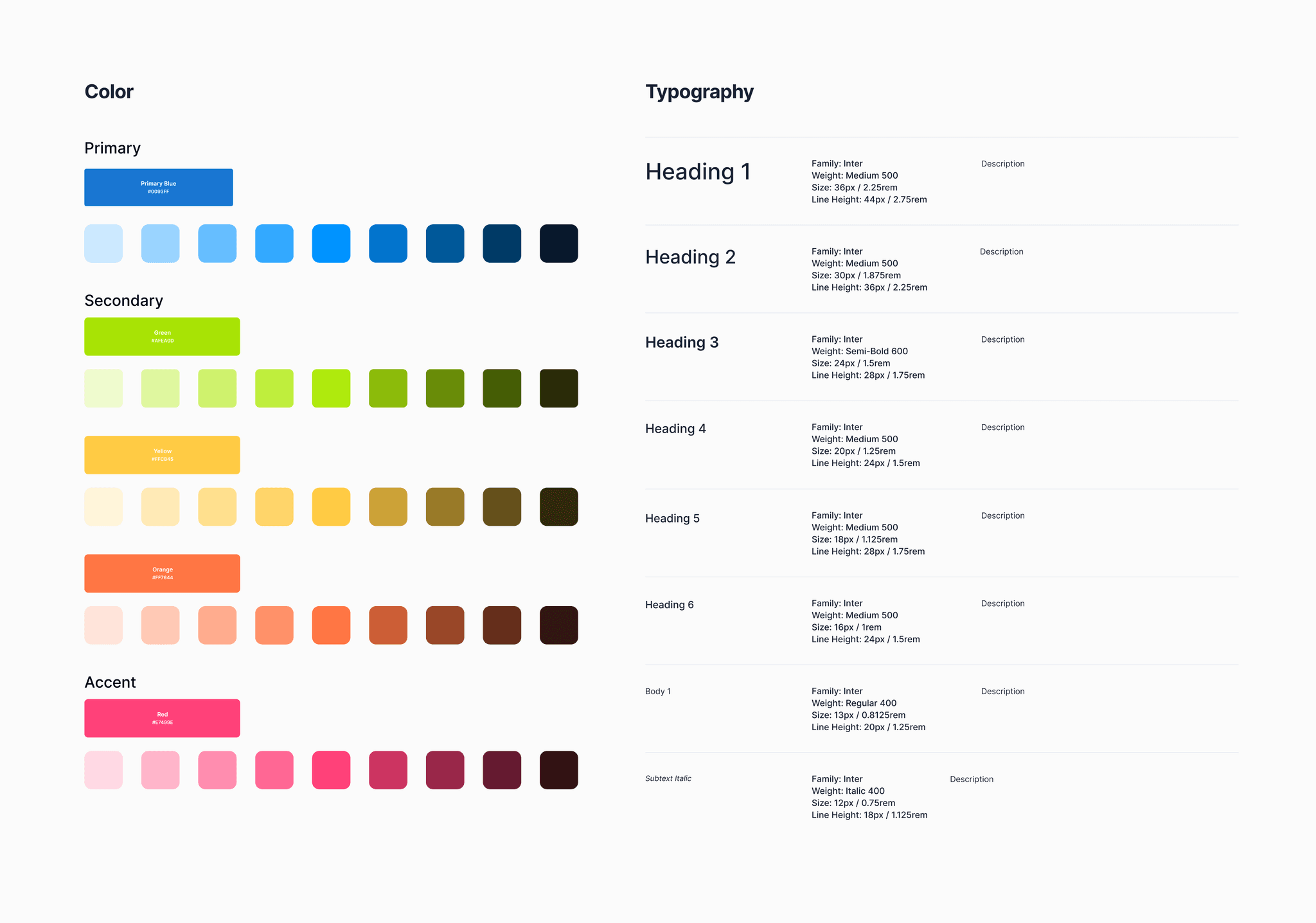
Digital Prototype

Adapting Assumptions Through Research
My team and I initially assumed that users wanted a wide range of essential features. However, after analyzing data through affinity mapping, we discovered users had larger pain points and cared less about certain features we initially prioritized. This shift in perspective allowed us to focus on what truly mattered to our users.

Gathering Feedback Iteratively
Collecting feedback throughout each iteration of the product was crucial. Encouraging constructive criticism early on helped uncover missed use cases and refine the design. Each round of feedback brought us closer to a solution that effectively addressed user needs.





